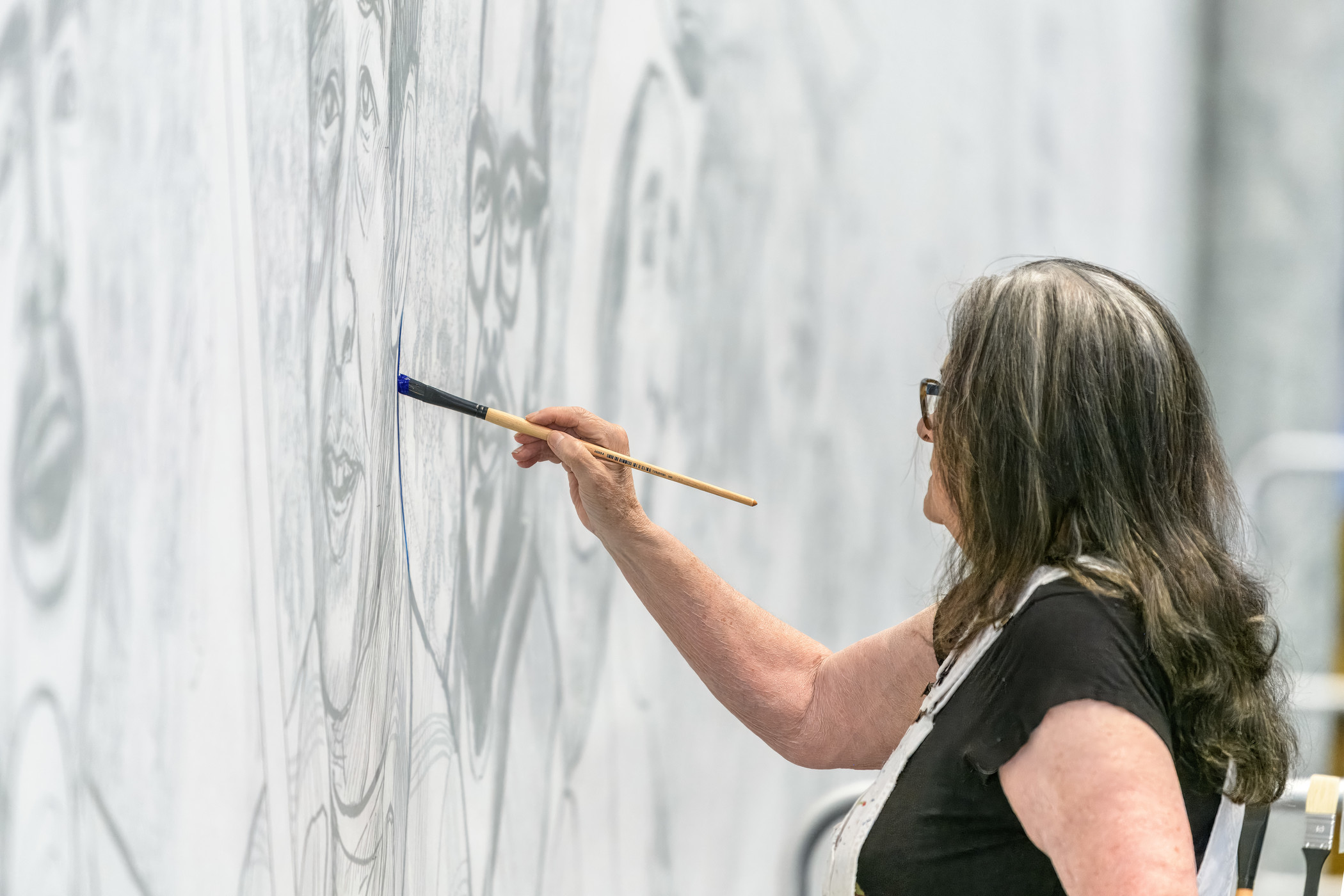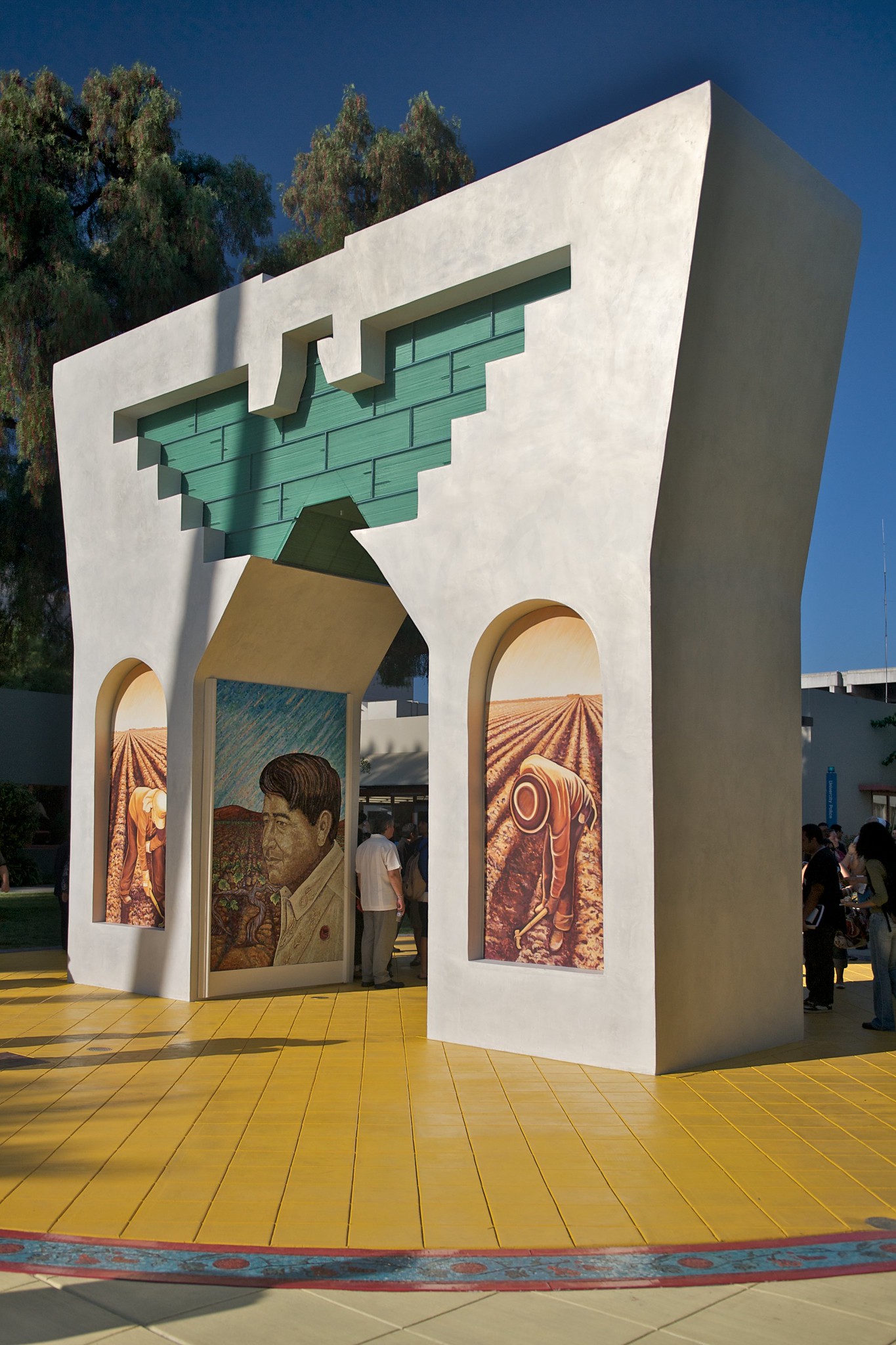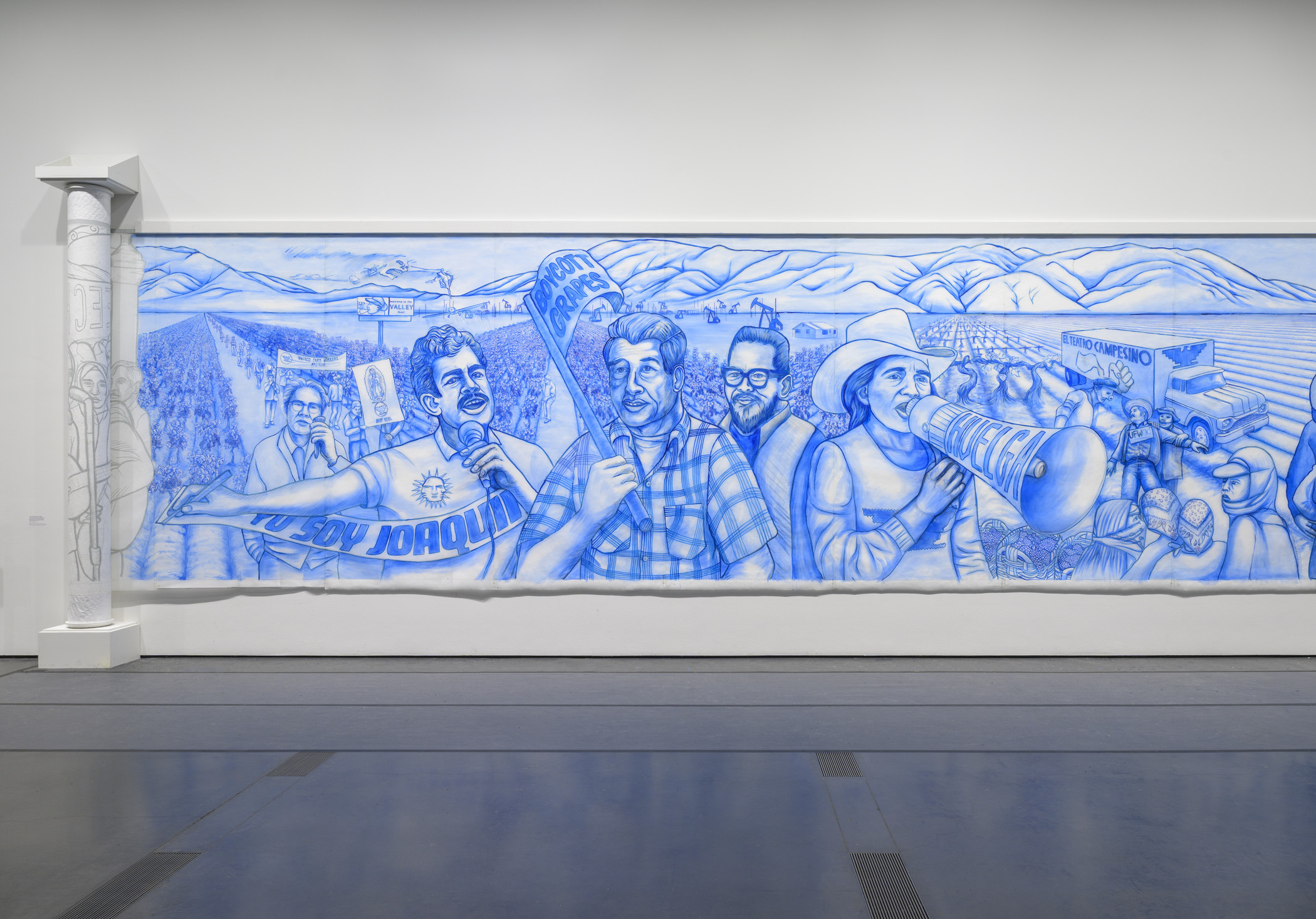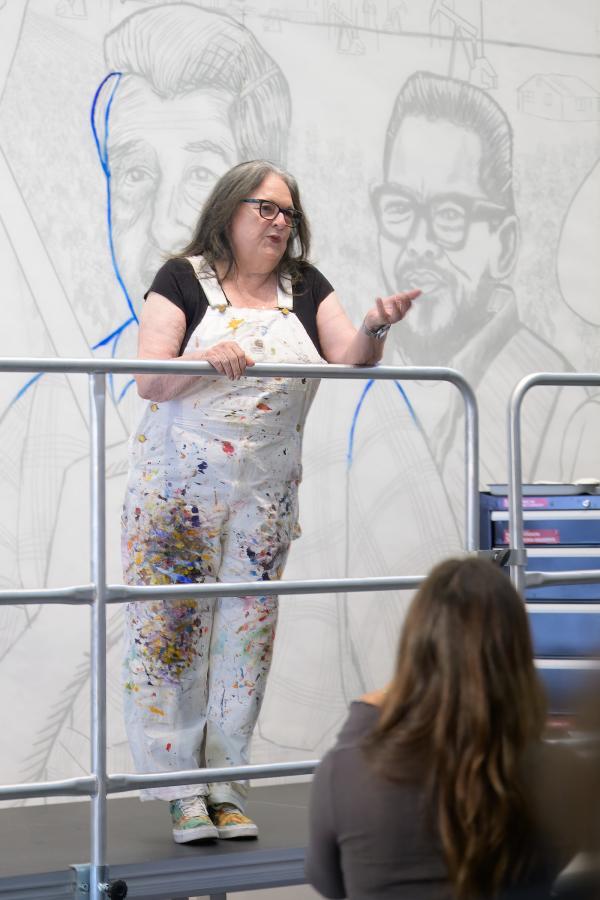“Hi, César,” Judy Baca said as she began to paint on top of a sketch of César Chávez, inaugurating the exhibition Painting in the River of Angels: Judy Baca and the Great Wall last October. “Welcome to LACMA.”
These first brushstrokes would commence a mural that will eventually be added to The Great Wall of Los Angeles, a landmark project Baca conceived of as a way to tell California history from the perspective of those who have been erased from it. Over five summers from 1976–83, she collaborated with 400 young people, artists, and community members who comprise the Social and Public Art Resource Center (SPARC), a group Baca co-founded. Together, they designed the mural and painted it on the walls of the Tujunga Wash, a tributary of the L.A. River in North Hollywood. For the exhibition Painting in the River of Angels, Baca has transformed LACMA into a studio, where she and SPARC artists are now continuing the story of The Great Wall by painting two new sections for it, the first of which features Chávez, among others.

César Chávez was an American labor leader and civil rights activist who organized to better the lives of farm workers working in unsafe conditions for low pay. Alongside fellow organizers and labor groups, he fought to secure better pay and working conditions on agricultural farms and created the United Farm Workers Union. Chávez led strikes and marches and even undertook a personal hunger strike to raise awareness for these causes, changing the lives of countless working people, which is why he is honored on César Chávez Day on March 31.
Baca has already worked on another monument commemorating Chávez, The Arch of Dignity, Equality, and Justice, which she and SPARC artists created for San José State University in 2005–8. The structure is based on a Mayan corbelled arch and mission colonial arches, paying tribute to his Spanish and Indigenous roots while also referencing the Spanish conquest. Its interior displays a portrait of Chávez, who is joined, on other parts of the arch, by Dolores Huerta, farm workers, and others, all watched over by the United Farm Workers Union eagle. The site also features a quote by Chávez: “The end of all education should surely be service to others.”

According to Baca, those words have deeply influenced her outlook on pedagogy and public engagement. “If you get to be the first Chicana or Chicano educated in your family, then you have the responsibility to open the door behind you,” she says. “You need to take your education and your strength as a method of advocating for others.” This approach is evident in her commitment to communities that extends beyond their work on public art.
“What I’m interested in is them becoming citizens,” she says. “Their participation, their willingness to come to a public meeting and to voice their concerns.”
The Great Wall is a testament to that participatory and civic dedication, not just in its collaborative production but also in its content. In the new section that depicts the Farmworkers’ Movement beginning in 1962, Baca illustrates Chávez alongside other leaders of the movement, including Philip Vera Cruz, Rodolfo “Corky” Gonzales, Larry Itliong, and Dolores Huerta. The organizers, whose impact and influence still echo in today’s fight for immigrants’ rights in big American agribusiness, take center stage amid the dangerous yet beautiful agricultural landscape of California. In the distance, Baca includes a blurred helicopter, alluding to the 1980 incident in which two female grape workers believed they were deliberately poisoned by a crop duster named Stephen T. Wilder with sulfur, commonly used as a pesticide to kill fungus and insects on plants, when he flew over the fields of Napa Valley Vineyards.

Amidst the perilous working conditions in the fields, the mural also depicts Gonzalez writing “Yo Soy Joaquín” on a banner, referring to the bilingual epic poem he self-published in 1967, which mirrors the Mexican Americans’ history and complicated relationship with language in the United States. Chávez appears alongside Itliong and Huerta with a sign reading “Boycott Grapes.” In September 1965, Itliong, Benjamin Gines, and over 800 Filipino farmworkers affiliated with the Agricultural Workers Organizing Committee (AWOC) went on strike at 10 grape vineyards around Delano, California. A few days later, the National Farm Workers Association (NFWA), co-founded by Huerta, Chávez, and Vera Cruz, joined AWOC and picketed 10 additional vineyards.
The mural also incorporates a truck in the background emblazoned with the words “Teatro Campesino.” Founded in 1965 by Luis Valdez, El Teatro Campesino was the cultural arm of the NFWA. Composed of farmworkers, El Teatro created and performed actos, or short skits, throughout Central and Northern California to raise funds for workers on strike. In 1967, Valdez explained that “El Teatro’s purpose was to examine and redefine the heart of the Chicano people: ritual, music, beauty, and spiritual sensitivity.” El Teatro Campesino gave Chicanx audiences a place of belonging during a time of discrimination and exploitation.

This mural of Chávez and his fellow organizers—which in its entirety also depicts the East L.A. Student Walkouts, and will be joined by another section illustrating the Watts Renaissance, the Watts Rebellion, and Black Panther community organizing—brings this crucial chapter of local history to LACMA before it will make its way to The Great Wall of Los Angeles, reaffirming Baca’s original idea of a monument dedicated to the people of California, past and present.
Painting in the River of Angels: Judy Baca and the Great Wall is on view in the Resnick Pavilion through June 2, 2024.



